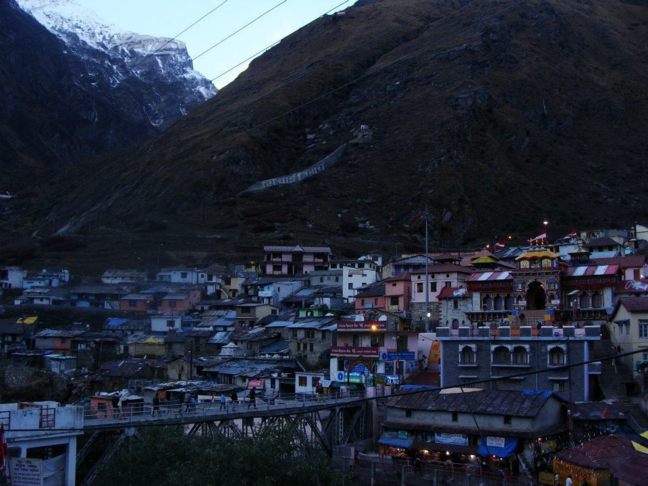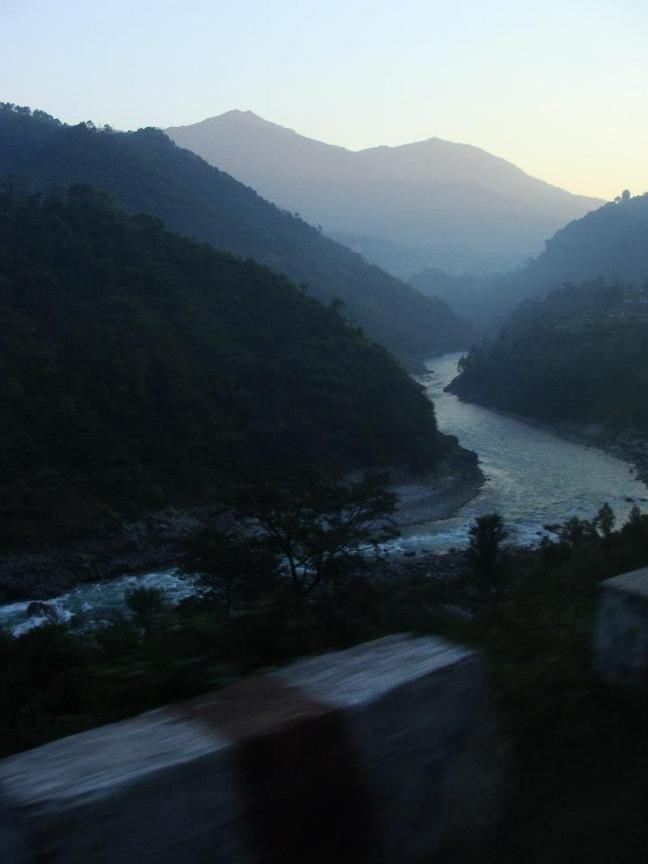
Whenever we hear the word ‘ Himalaya’; a range of snow peaks, high mountains, crystal clear rivers and flourished hill forests occupies our minds. Maybe most of the western countries and countries from rest of the world look forward to Himalayas as the perfect adventure destination but people from India does not consider the word only as Himalaya but there is another term called ‘ Holy Himalaya’ or ‘sacred Himalaya’ which means a lot to the Hindu people. There is a very strong spiritual thread is connected for Hindus to the Himalayas. According to the Hindu mythology Himalayas are the holiest place on the earth so they believe Himalayas are the abode of Gods. Hindu mythology revolves around mainly three gods ‘ Brahma’ the creator, ‘Vishnu’ the protector and ‘Shiva’ the destroyer. According to the ancient Hindu literature, which is available, Himalayas mainly deals with the ‘Shiva’ – known as mountain god also. He was the inventor of Yoga so has an impressive and powerful personality. He spends most of his time in meditation into the solace of deep Himalayan mountains. His residence we Hindu believe is the Mount Kailash in the Tibet; a holy mountain for Hindus and Tibetans both and hence is not allowed to climb. His family consists of his wife goddess ‘Parvati’ –daughter of the King Himalaya – who meditated hard to get Lord Shiva as her husband and sons ‘Ganesha’ or ‘Ganpati’ –famous as the elephant god- and god of knowledge or education and other son ‘Kartikeyan’.
The states of Jammu and Kashmir, Himachal Pradesh, Northeastern region and the state of Uttarakhand are situated in the Himalayan ranges.
The state of Uttarakhand is divided into two sub-regions known as ‘Garhwal’ and ‘Kumaoun’. Garhwal region is home for most of the holy Himalayan pilgrimage sites in India. This range of Himalaya is known as ‘Shivalik’ named after lord Shiva. Each and Every stone in the Garhwal has a story behind it. For most of the Hindus visiting these pilgrimages is once in a lifetime opportunity for which they pay uttermost cost sometimes risking their lives also.
Around 222 km northeast to the capital city of India, New delhi, there is the gateway to Garhwal Himalayas through a pilgrimage town called ‘Haridwar’. This town is famous worldwide but not all the people from western countries know the significance of this place. ‘Haridwar’ is made up of ‘Hari’ – lord Vishnu and ‘dwar- door’ literally meaning ‘ door to lord vishnu’ or ‘door to heaven’.
One more significance of Haridwar is Ganges. This is the place from where Ganges ends its journey of the mountains and enters into plains. Every evening there is a ‘Ganga Aarti’ or ceremony to worship Ganges in the temple of Goddess Ganga situated on the riverbank and this place is particularly called as ‘Har KI Pauri’ means ‘Step of Vishnu’. Everyday lakhs of pilgrims from other parts of India and people from around the world come to dip in the holy water of Ganges because it is believed that holy water of Ganga has an power to wash off all the sins one has done in a lifetime and also to have a look at this ceremony.
The state of Uttarakhand is divided into two sub-regions known as ‘Garhwal’ and ‘Kumaoun’. Garhwal region is home for most of the holy Himalayan pilgrimage sites in India. This range of Himalaya is known as ‘Shivalik’ named after lord Shiva. Each and Every stone in the Garhwal has a story behind it. For most of the Hindus visiting these pilgrimages is once in a lifetime opportunity for which they pay uttermost cost sometimes risking their lives also.
Around 222 km northeast to the capital city of India, New delhi, there is the gateway to Garhwal Himalayas through a pilgrimage town called ‘Haridwar’. This town is famous worldwide but not all the people from western countries know the significance of this place. ‘Haridwar’ is made up of ‘Hari’ – lord Vishnu and ‘dwar- door’ literally meaning ‘ door to lord vishnu’ or ‘door to heaven’.
One more significance of Haridwar is Ganges. This is the place from where Ganges ends its journey of the mountains and enters into plains. Every evening there is a ‘Ganga Aarti’ or ceremony to worship Ganges in the temple of Goddess Ganga situated on the riverbank and this place is particularly called as ‘Har KI Pauri’ means ‘Step of Vishnu’. Everyday lakhs of pilgrims from other parts of India and people from around the world come to dip in the holy water of Ganges because it is believed that holy water of Ganga has an power to wash off all the sins one has done in a lifetime and also to have a look at this ceremony.
The main priest holding the ‘ Ghee Diya’ or ‘ Butter Light’ during the ceremony
People taking a dip into the holy water of Ganges
The holy Ganges in Haridwar; Har Ki Pauri and goddess Ganga temple on the right side and massive crowd to attend the evening ceremony is visible
As said earlier Garhwal Himalayas are the home to Hindu pilgrimages. There are ‘ Panch Prayags’ means ‘ five holy confluences’, ‘Panch Badri’ – five different temples of Lord Vishnu and ‘ Panch Kedar’ – five different temples of lord Shiva. Visiting these particular pilgrimages is once in a lifetime opportunity for Hindus.
People taking a dip into the holy water of Ganges
The holy Ganges in Haridwar; Har Ki Pauri and goddess Ganga temple on the right side and massive crowd to attend the evening ceremony is visible
As said earlier Garhwal Himalayas are the home to Hindu pilgrimages. There are ‘ Panch Prayags’ means ‘ five holy confluences’, ‘Panch Badri’ – five different temples of Lord Vishnu and ‘ Panch Kedar’ – five different temples of lord Shiva. Visiting these particular pilgrimages is once in a lifetime opportunity for Hindus.

Approximately 70 km ahead of Haridwar comes a place called ‘Devprayag’. This is one of the must-visiting places in Garhwal. The importance of Devprayag is it a confluence of river Bhagirathi and river Alaknanda. Later this mixed flow of rivers is known as Ganga or Ganges. So this is the forming point of the Ganges, so a sacred site for Hindus. There is an ancient lord Rama temple in Devprayag, which has a history behind it. Lord Rama was the avatar or the form of lord Vishnu only. During Ramayana (the Hindu epic telling the life story of Lord Rama) he killed an evil Brahmin called ‘Raavana’. Hinduism prohibits killing anybody and is considered as the supreme sin one can ever do. But since Raavana was an evil figure Rama had to kill him to protect the people from his bad deeds. Rama knew killing someone is a sin and hence after the incident he headed to Devprayag to pray goddess Ganga (since she is a mother figure who wash off all the sins) and he meditated here on the bank of the confluence. The temple was built in the memory of lord Rama and this particular incident. This confluence is best visible during the months of March to June.
At Devprayag – the confluence of river Bhagirathi on the left (blue colour) and river Alaknanda on the right (muddy colour) here onwards the flow is known as the ‘Ganges’



























